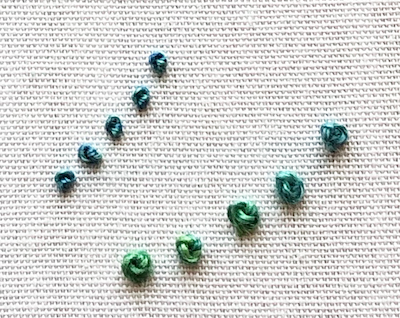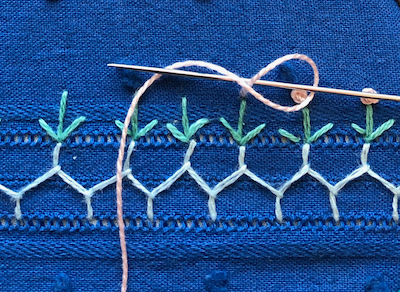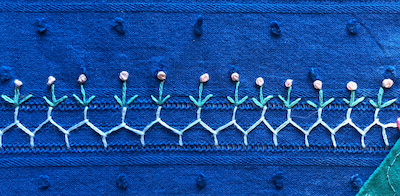- Home
- Basic embroidery stitches
- Colonial Knot
Colonial Knot vs French Knot
As embroiderers, we know that choosing the right knot can make all the difference in our projects.
But when it comes to Colonial knots and French knots, which one reigns supreme? In this article, we'll explore why Colonial knots are a superior choice to French knots, offering added security, versatility, and creative freedom in embroidery projects.
French knots may be a popular choice, but many stitchers find them frustrating to work with and prone to unraveling. That's why I recommend using Colonial knots as a slightly larger, more rounded alternative. Not only are Colonial knots more secure, but they're also less likely to come undone when you wash your project.
So, what makes Colonial knots so special? The secret lies in their unique technique. Unlike French knots, which use a single twist, Colonial knots employ two twists around the needle in opposite directions. This creates a more stable knot that's less likely to unravel.
 French knots (top) compared to Colonial Knots
French knots (top) compared to Colonial KnotsHow to make a Colonial knot
The following step-by-step photos show how I worked Colonial Knots as part of the decoration on a crazy quilt block.
Bring the needle through the fabric in the position you wish to create the knot. Arrange the thread so it forms a backwards letter C to the right of the point where the thread comes through the fabric. Slip the needle under the thread from right to left as shown in the photograph.

Take the working thread and lay it over, then under the needle point, to create a sort of figure eight. Pull the thread towards your body firmly but gently.

Angle the needle straight down into the fabric, while keeping tension on the working thread. Push the needle down through the fabric, not letting go of the thread until the last minute. This will ensure the colonial knot is tidy, not loose and floppy.

I embellished this printed fabric by stitching a Colonial knot on alternate green dots to form a ring around the rose. It somehow reminds me of a string of pearls. I could use this in a crazy quilt block. The thread used was again Pearl cotton number 8.
Try using Colonial knots to create a similar design element on your own embroidery projects, such as adding texture to a floral pattern or creating a decorative border.

What are Colonial Knots used for?
I have created a list below giving some examples of where you can use Colonial knots. If you think of others, let me know and I will add them.
- Candlewicking on bedspreads - a whitework embroidery technique
- In a counted cross stitch design - instead of French knots or beads
- For the centre of flowers
- Tiny floral sprays
- For eyes on soft toys or rag dolls - safer than buttons or glass eyes
- Grouped together to form bunny tails
- Berries in autumn flower arrangements
The difference between the two knots


On the crazy quilt block photographed above, I used Colonial knots for the top flowers and French Knots for the smaller stitches in between the leaves. For both types of knots I used the same thread - Pearl Cotton number 8.
By incorporating Colonial knots into your embroidery projects, you can create more secure and visually appealing designs that will last longer and require less maintenance.
Try using Colonial knots in your next embroidery project to see the difference for yourself!
Stay connected between projects
If you’d like occasional updates from my embroidery room, including new patterns, gentle tips, and little things I think you might enjoy, you’re warmly invited to join the Stitchin’ Times newsletter.
No pressure. Just a friendly note now and then to keep you inspired.


